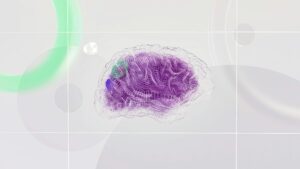Scientists have been captivated for decades by the dolphins’ sociality and intelligence. Playful, highly social creatures with complex social hierarchies and highly sophisticated vocalizations, dolphins have been recognized as among the smartest non-human species. Their language, however, has remained mysterious until this week. Google has announced the release of DolphinGemma, an artificial intelligence model to read and even anticipate dolphin vocalizations. This innovation represents a big leap for connecting humans and dolphins through communication using the potential of artificial intelligence.

What Is DolphinGemma?
DolphinGemma is a component of Google’s larger AI research project that seeks to study natural, non-human communication systems. The model is intended to examine and find repeating patterns of sound in dolphin vocalizations. By separating out these patterns, DolphinGemma hopes to find the underlying structures and possible meanings of dolphin communication.
What distinguishes DolphinGemma from other programs is its ability not only to recognize particular patterns of sound, or vocal sequences, but also to anticipate what the dolphin could say next. This predictive feature is an integral piece in creating a two-way communication bridge between humans and dolphins.
The Science Behind Dolphin Communication
Dolphins use a sequence of clicks, whistles, and body postures to communicate. Their sound-based language is thought to be extremely sophisticated, perhaps rivaling the complexity of human languages. Every dolphin possesses a specific “signature whistle,” which serves as a name. In addition to this, dolphins employ varying combinations of sounds in different situations—whether hunting, playing, or warning each other of danger.
Even after decades of acoustic investigation, the problem has remained interpreting these sounds in a useful manner. In contrast to human languages, dolphin language is not subject to grammar or vocabulary as it is known and is therefore extremely challenging to decode without powerful computational assistance.
How DolphinGemma Works
DolphinGemma uses machine learning methods to study huge collections of dolphin audio recordings. The AI listens to hours of underwater chatter and searches for recurring structures or “sound motifs.” These motifs can represent recurring patterns of talk that are associated with certain dolphin behaviors or social interactions.

Google researchers indicate that by recognizing such repeating patterns, they can then start charting a possible “vocabulary” of dolphin whistles. One day, it could form a basis for back-and-forth communication between human and dolphin.
Furthermore, DolphinGemma’s predictive algorithm enables it to make educated guesses about what will be the next sound in a dialogue between dolphins. This is important in comprehending the syntax and rhythm of dolphin language and may assist in ultimately building coherent “sentences” or responses.
Potential Applications and Implications
If DolphinGemma continues to develop well, the consequences will be significant:
Marine Conservation: Improved communication of dolphins would enable more effective conservation. Researchers would be able to track dolphin stress signals, migration calls, or alerts on threats in real-time.
Ethology and Research on Animal Behavior: By translating dolphin language, scientists would get to know the social structures, emotional lives, and cognitive faculties of dolphins.
Inter-species Communication: The ultimate long-term goal may be creating a translator that enables people to have simple conversations with dolphins, revolutionizing the way we interact with marine animals.
AI in Wildlife Studies: DolphinGemma opens doors to applying AI to research other animal communication systems—those of elephants, whales, or even birds.
Challenges and Ethical Considerations
While exciting potential lies ahead, various challenges must still be overcome. Communication from animals is naturally complex, and we can project human constructs upon behaviors that don’t fit our models of language. There is always the risk of anthropomorphism—projecting human qualities onto animal behavior.
In addition, ethical factors will be paramount in the future. If we are able to speak with dolphins, should we? What are our responsibilities in communicating and comprehending an alternate intelligent life form? These are matters the scientific and international community must seriously weigh
Read Also: Elon Musk’s Grok AI Controversy
Google’s Broader Mission in AI for Nature
DolphinGemma is not a one-off project. It fits with Google’s growing interest in AI for environmental and biological purposes. Other AI-powered initiatives include applying machine learning to identify illegal deforestation, safeguard endangered species, and analyze climate information.
By using AI to crack the code of animal communication, Google is leading the way towards a future where technology not only meets human demands but also enables us to understand and live in harmony with nature better.
Google’s DolphinGemma project is not only a technological innovation—its a glimpse of what tomorrow might look like, when the gap between the human species and the animal world might just disappear thanks to artificial intelligence. Breaking the code to dolphin communication takes us on an ambitious path towards comprehending other intelligent life’s consciousness and culture on Earth.
While we’re still a long way off from discussing philosophy or politics with dolphins, the groundwork is being set. If successful, DolphinGemma could be more than rewriting the way we perceive dolphins—how we perceive communication itself.
